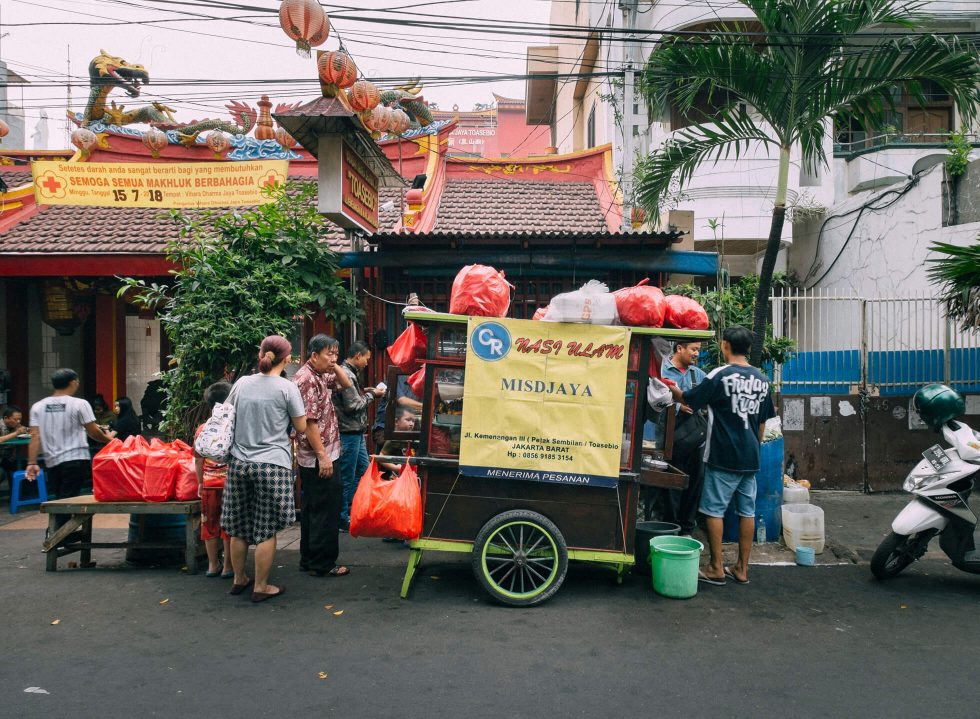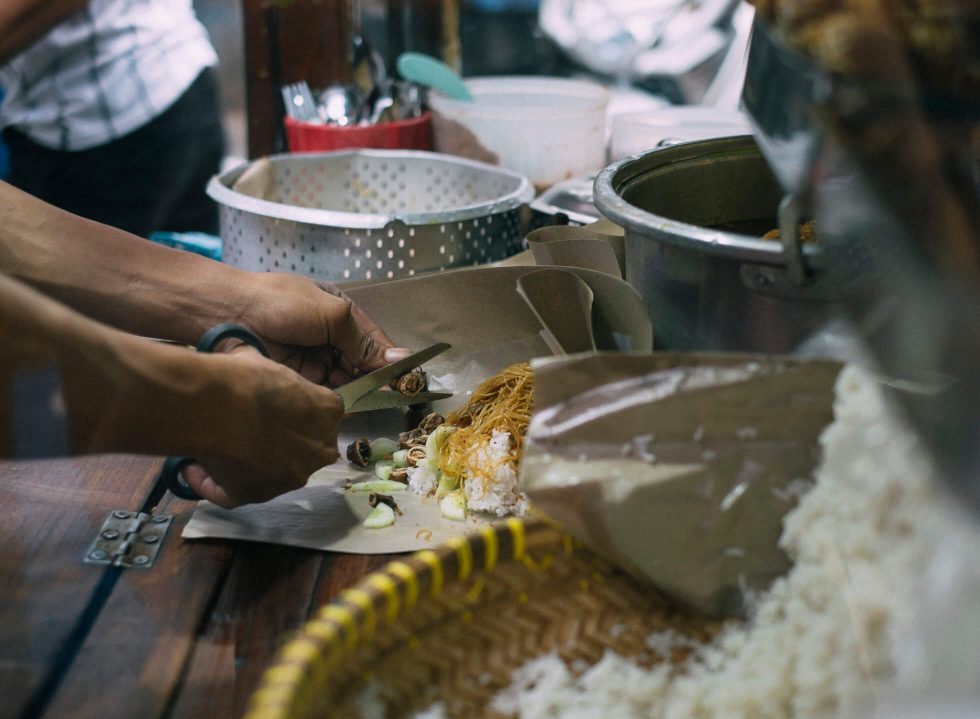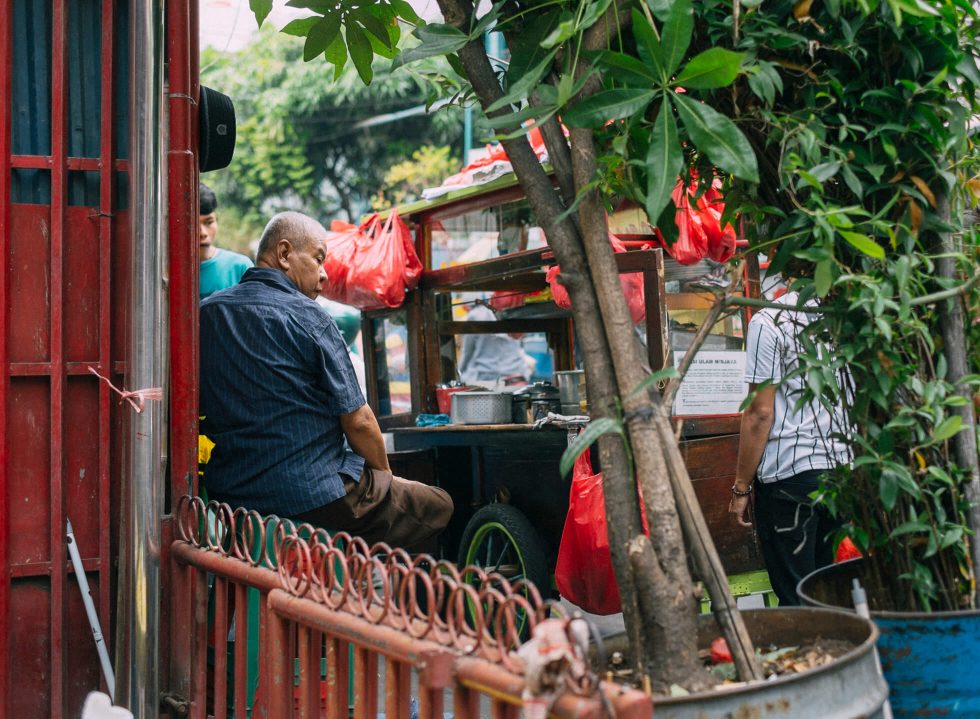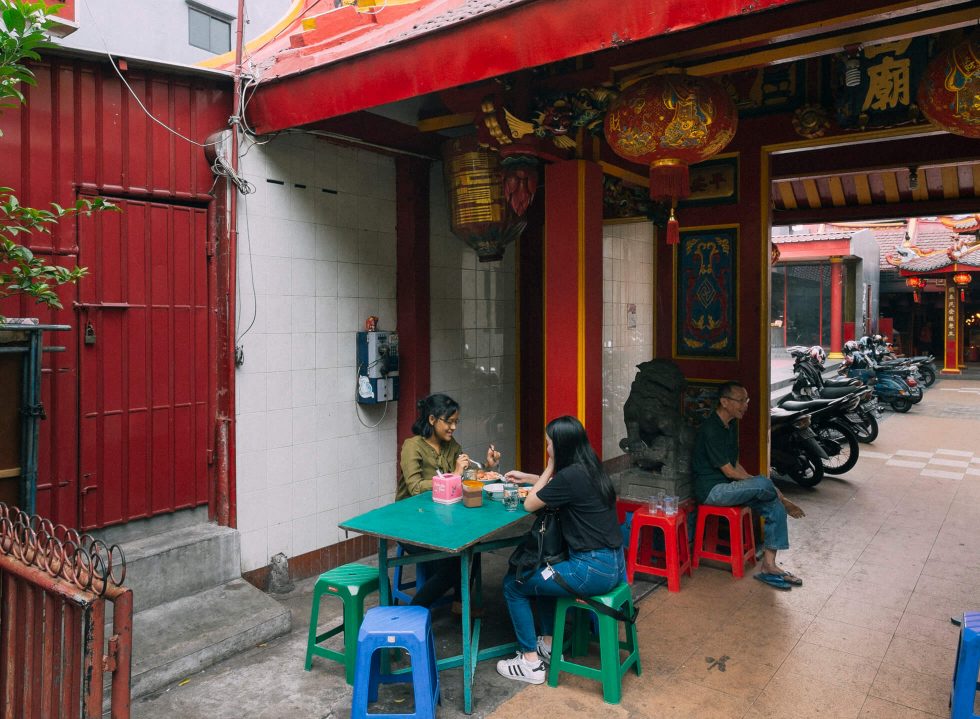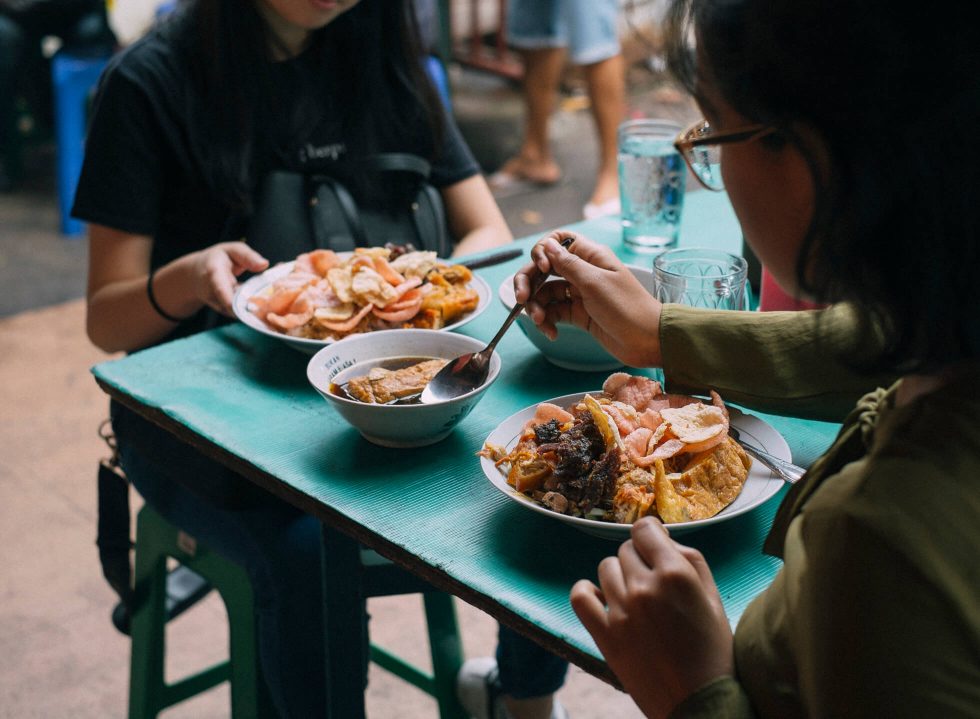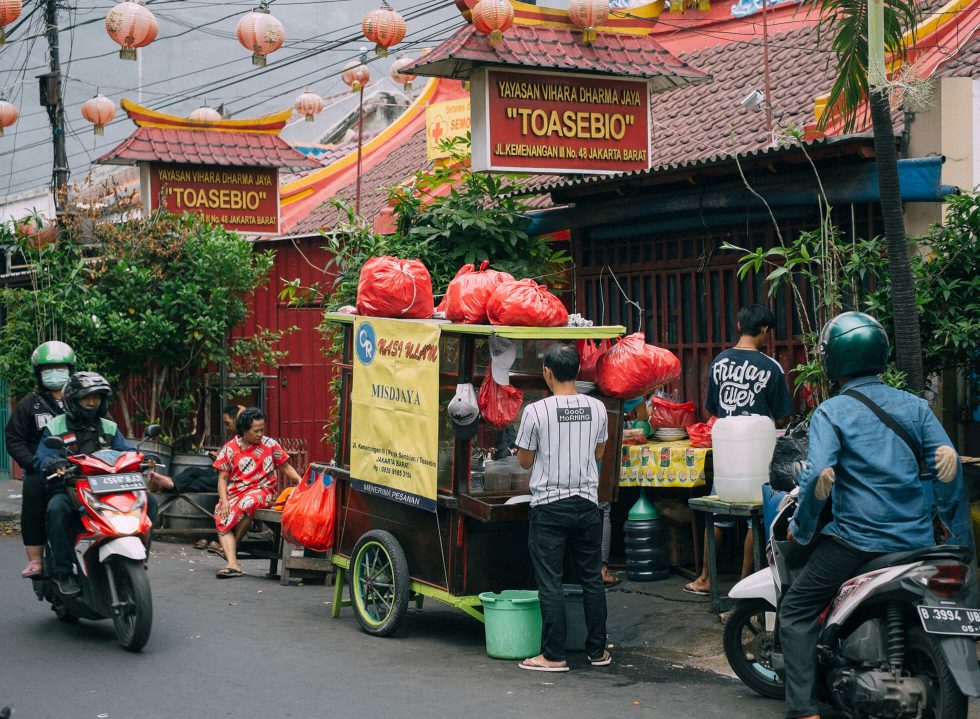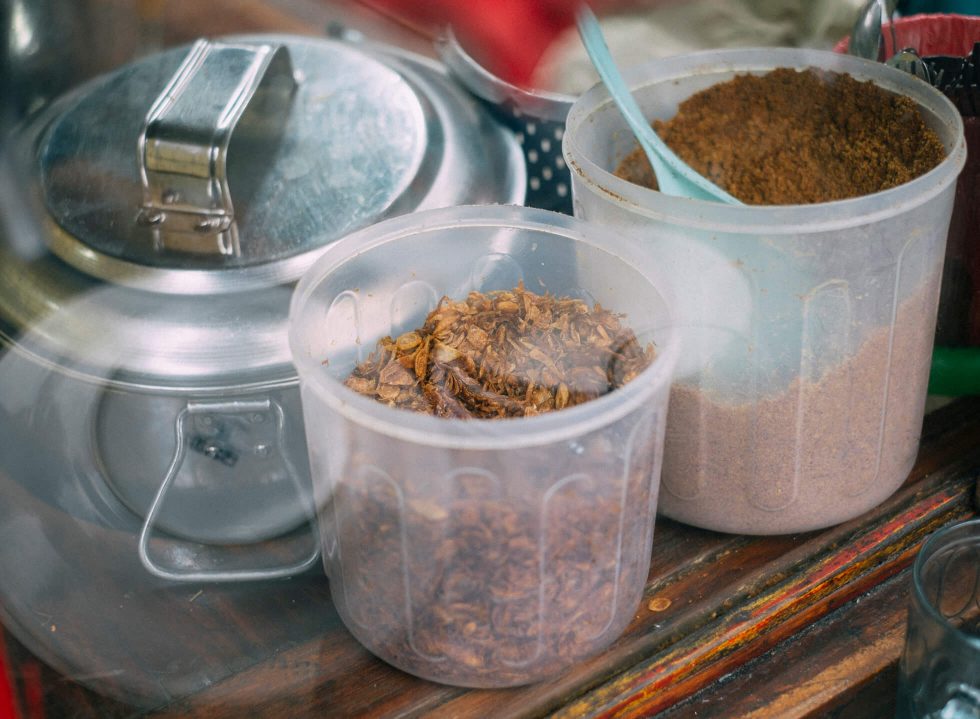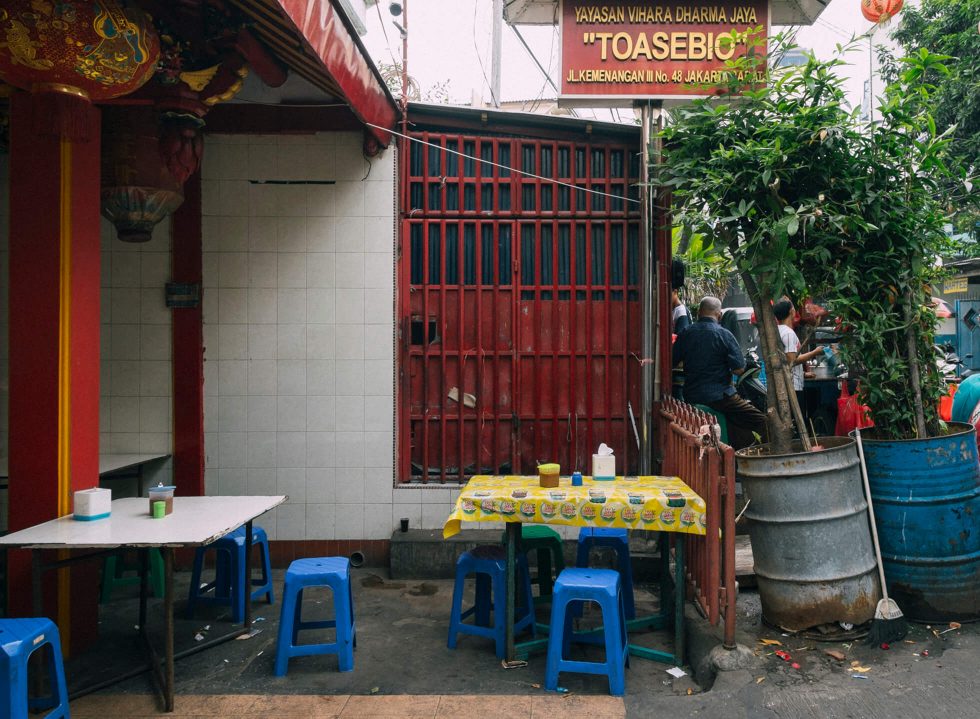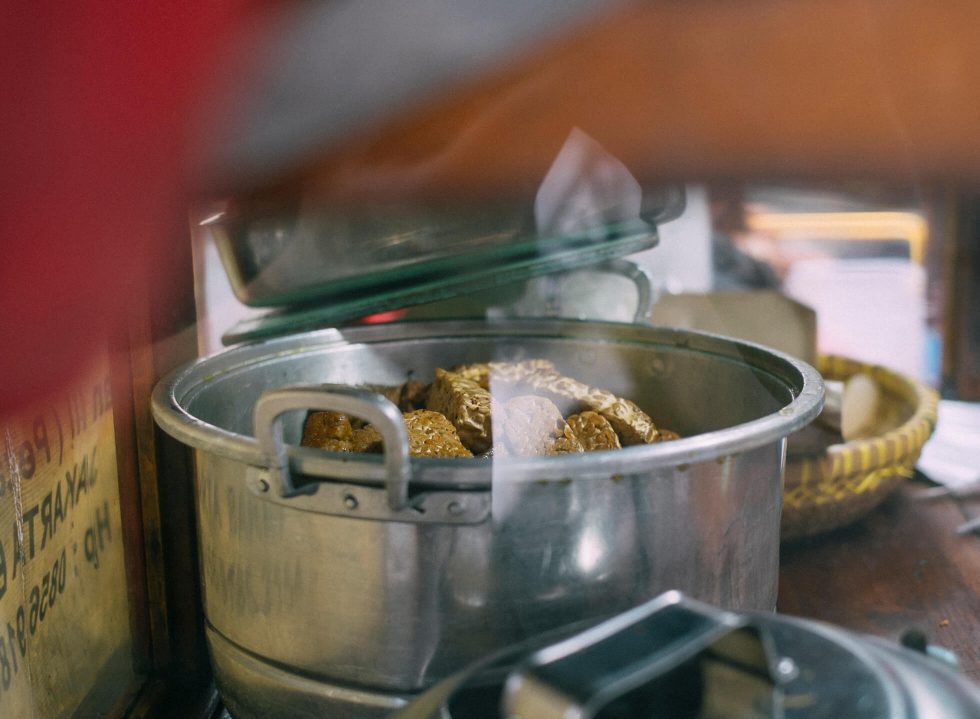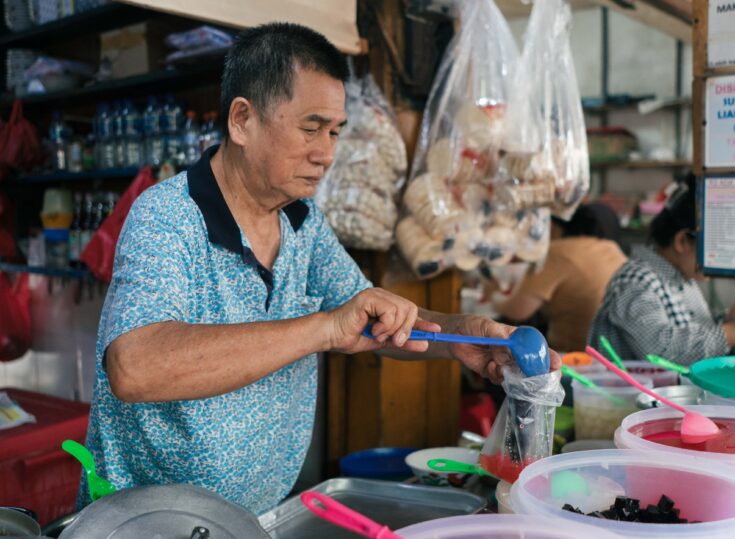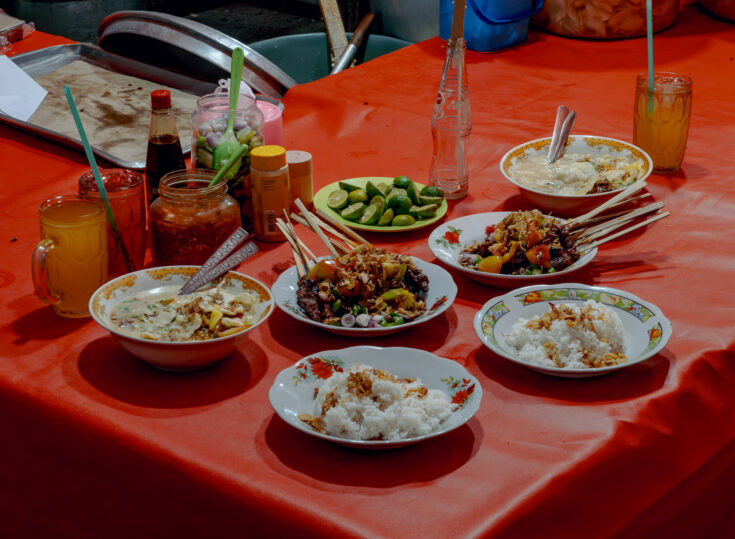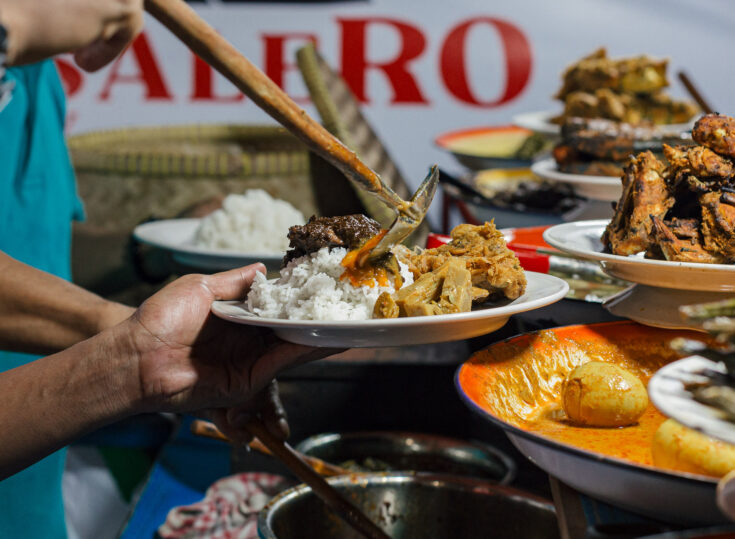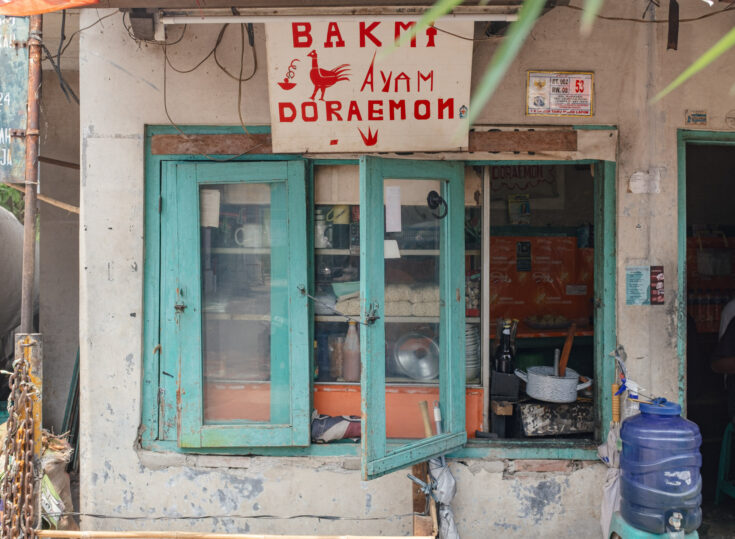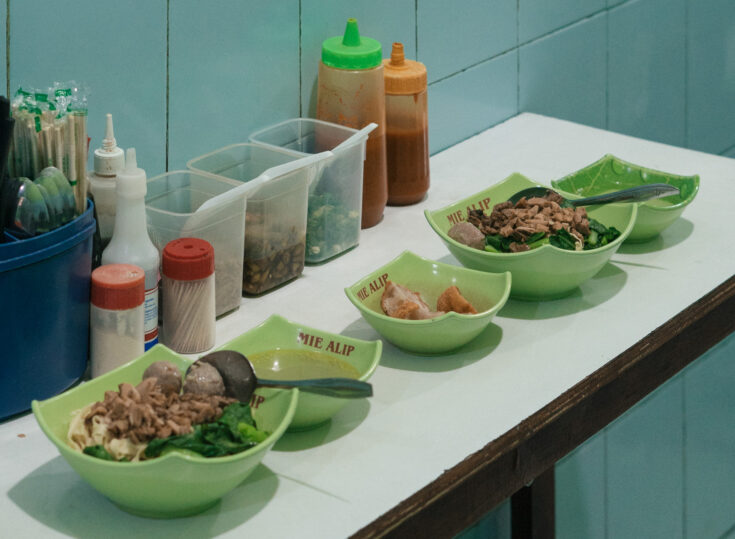What comes to mind by the mention of Glodok? Of course, its title as a culinary destination.
Despite their physical size, plenty of the small shops, stalls, and carts in Glodok are capable of drawing in big crowds to the neighbourhood. While some of these cease serving once the sun sets, there are others who passed the half-century mark like Nasi Ulam Misdjaya that only begins serving out its sole menu, the Betawinese nasi ulam, at four in the afternoon.
It may be easy to overlook an unassuming wooden cart by the side of the road, but Nasi Ulam Misdjaya is an exception. Simply look out for a cart with a yellow banner on which “MISDJAYA” is written in volumes. But if that’s still not enough as a hint, search for the historic Toasebio Temple where the cart is parked right ahead.
The menu’s complete set features a generous number of side dishes. From a huge telur dadar (omelette), dried baby squid, fried tempe, perkedel (potato patty), red crackers, emping (melinjo crackers), and the highly sought-after special dendeng (spiced beef jerky), all of them are without doubt mouth-watering. These will be piled on top of steam rice and fried vermicelli, then sprinkled with peanut powder. Served along that plateful is a warm bowl of semur (brown stew) with big chunks of tofu, tempe and potatoes. With the fitting combination of ingredients and flavours, one surely wouldn’t mind having their plate full in this context.
If you’re lucky, you might be able to find an empty seat on the yard by the temple gates, where every meal here is accompanied with an unobstructed view of how day-to-day activities in one of the deepest Glodok streets look like.
Chow down as you hear the continuous chatter of the visitors of the temple, enhanced by the loud hum of passing vehicles, which, both add another layer of the dining experience here. And after you finish your meals, stretch your legs out by visiting the aforementioned Toasebio Temple, which remains a notable religious site for locals and tourists even after standing for 263 years.
